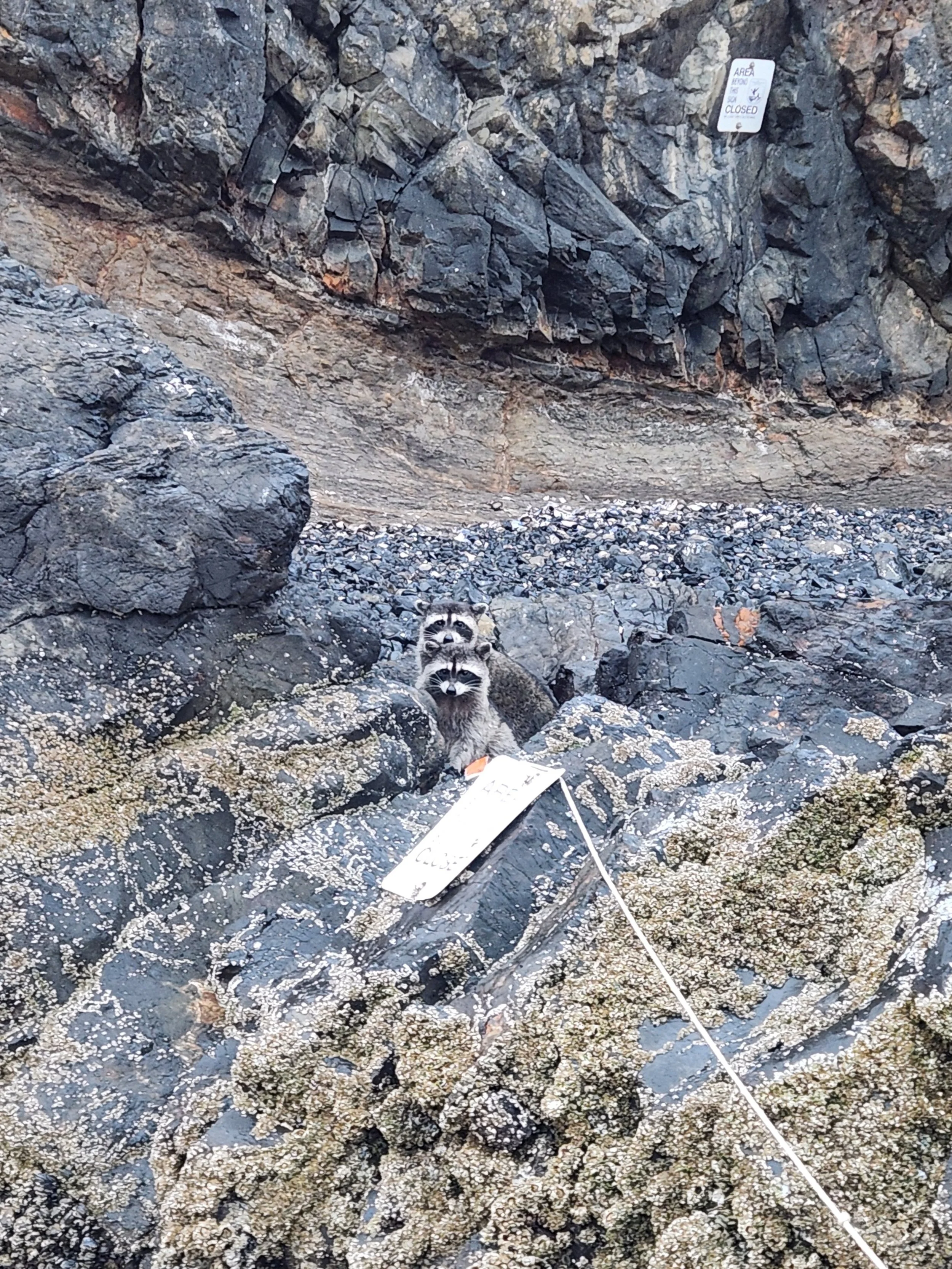Raccoon (Procyon lotor)
Two juvenile raccoons at Haystack Rock (photo credit: Katie Corliss)
Black oystercatcher eggs attacked by raccoons (photo credit: Katie Corliss)
Description: The black mask across their face is the most identifiable marking on raccoons. Their bodies are overall gray to brown with some darker patches, especially on their head or back. They also have a fluffy gray tail with black rings. They are generally small compared to typical mammals seen at Haystack Rock, between 6-7 kg (13-15 lbs), but that’s still bigger than a typical housecat!
Habitat: Raccoons can be found across most of the United Stated, southern Canada, and even into the northern regions of South America. Part of their wide range is due to being very adaptable. Their main habitat requirement is to have a water source. They do prefer wooded areas but can easily and often be seen living around humans and urban areas as well. Being nocturnal, they often visit Haystack Rock (in search of food) when low tide falls in the middle of the night.
Diet: In general, raccoons are opportunistic and will eat anything they can get their hands on. They frequently eat fruits, nuts, invertebrates, rodents, fish, and bird eggs. While many birds choose to nest at Haystack Rock to be protected from land predators, raccoons are great climbers and swimmers, frequently still getting to their nests and stealing their eggs. They most often make the trip to the rock when low tide falls in the middle of the night (no swimming required).
Tide Pool Tidbits:
The lifespan of raccoons can be up to 16 years but most only live an average of 5 years.
Raccoons may appear lazy, but they can still reach speeds of 24 km (15 mi) per hour!
The black oystercatchers that nest low in The Saddle of Haystack Rock (below the Do Not Enter sign) are most at risk of predation by raccoons. In the summer of 2025, they attempted 3 clutches of 3 eggs each that were all preyed on by raccoons.
Reference: Animal Diversity Web



